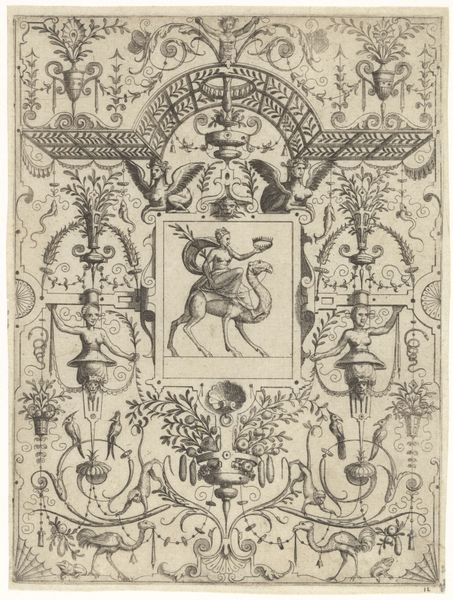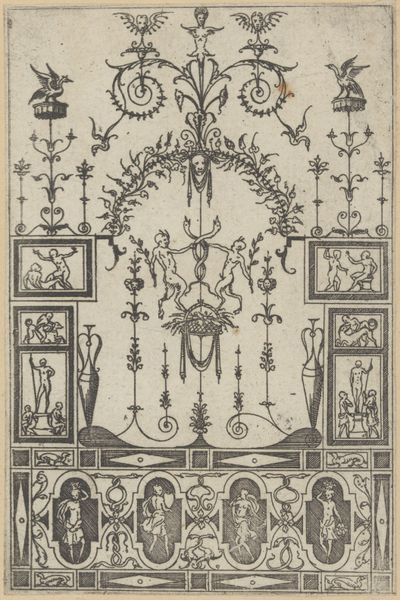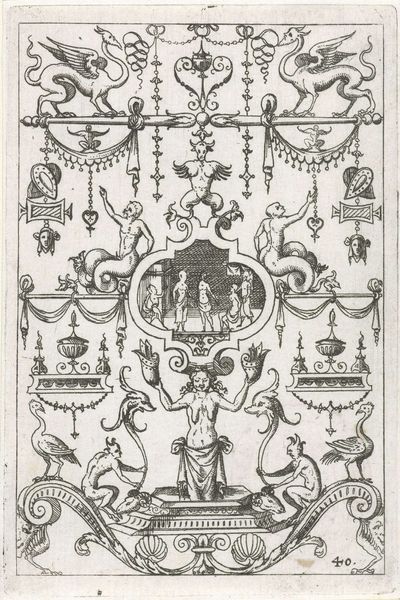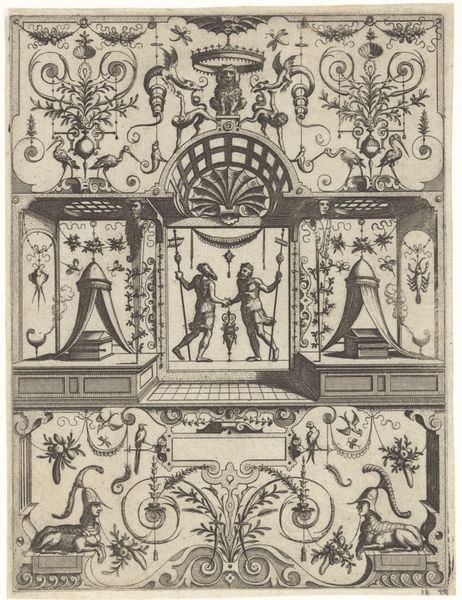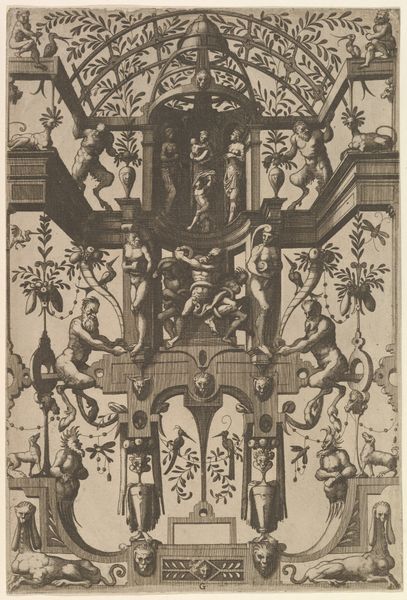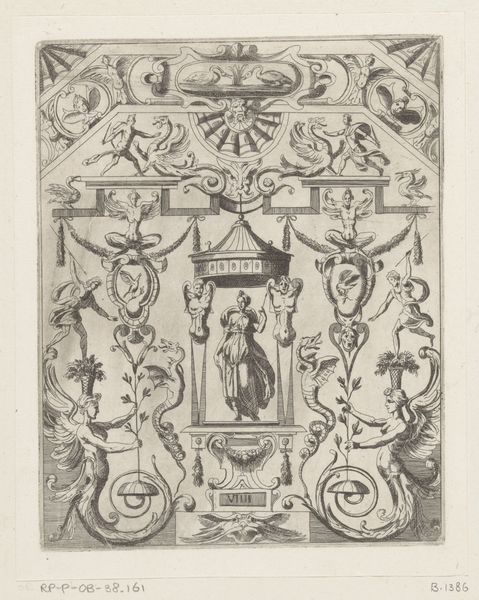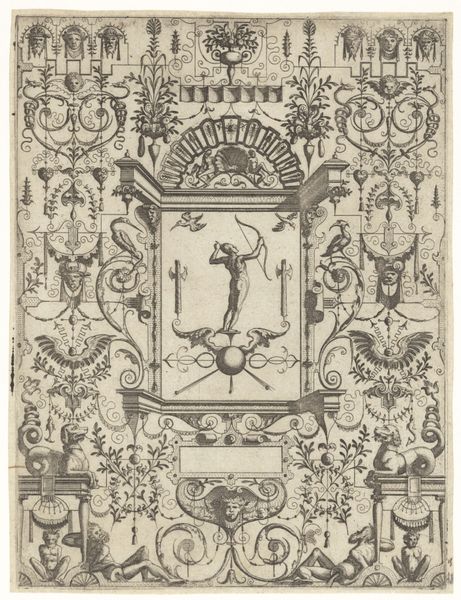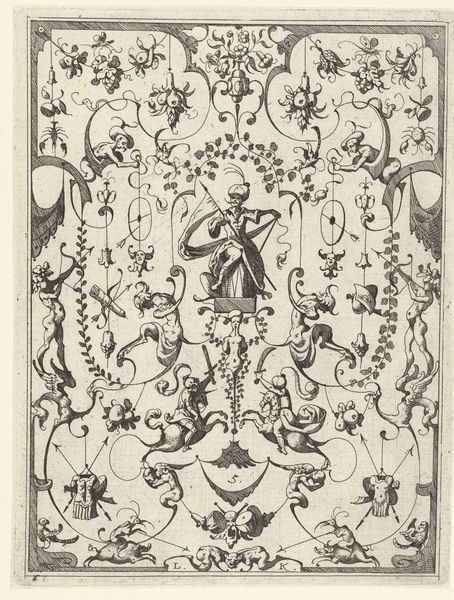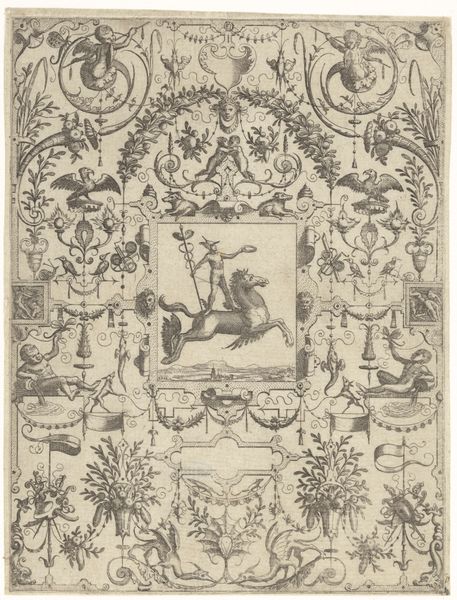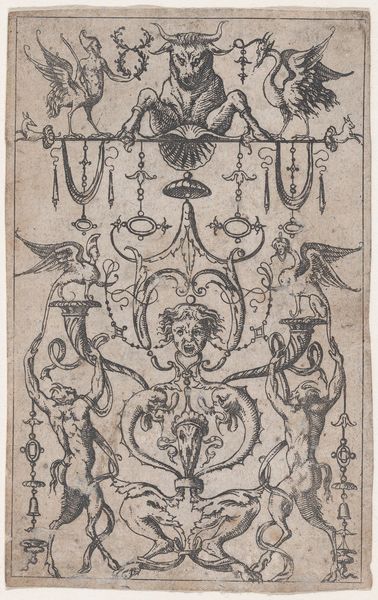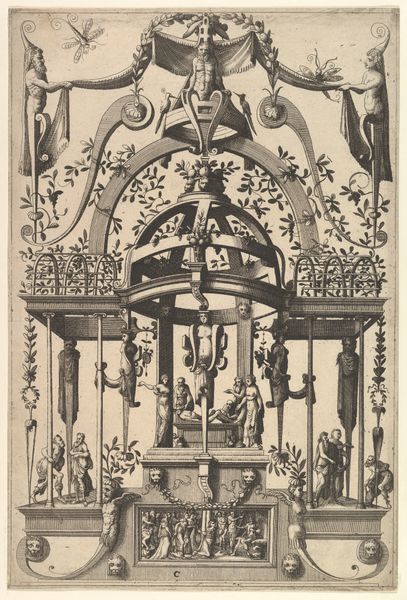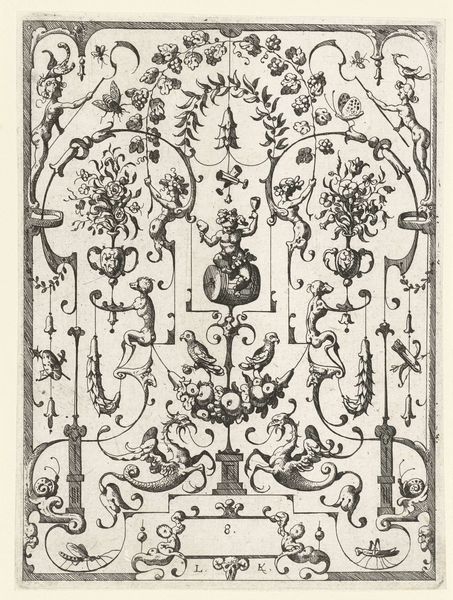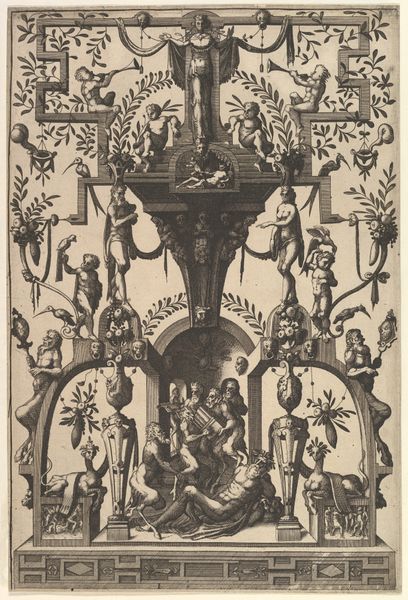
Surface Decoration, Grotesque with Strapwork and Pergolas, Burial Scene above center from Veelderleij Veranderinghe van grotissen ende Compertimenten...Libro Primo 1556
0:00
0:00
drawing, graphic-art, print, ink, engraving
#
drawing
#
graphic-art
#
allegory
# print
#
mannerism
#
figuration
#
ink
#
engraving
Dimensions: Sheet: 12 3/16 x 8 3/16 in. (31 x 20.8 cm)
Copyright: Public Domain
Editor: This engraving, "Surface Decoration, Grotesque with Strapwork and Pergolas," dates back to 1556 and is attributed to Johannes van Doetecum I. The complexity of the design, a chaotic jumble of figures and patterns, really strikes me. What's your take on how the materials themselves shape our understanding of this work? Curator: The choice of engraving, particularly during the Mannerist period, is central. It facilitates reproduction and dissemination. Consider the social context: this print wasn't meant for a museum wall. It served as a pattern for artisans. Think of furniture makers, tapestry weavers – anyone seeking fashionable motifs. Does this shift how you view the “chaotic jumble?" Editor: Definitely. It suddenly seems more like a resource, a catalogue of decorative elements, rather than a singular artistic statement. So the value lies not in some inherent meaning, but in its utility? Curator: Precisely. The labor involved in producing the printing plate and then generating multiple copies made such images like these affordable and it influenced wider aesthetic trends in interior decoration and craft. What boundaries did such printed dissemination blur? Editor: It blurred the line between "high art" and "craft", because something that starts as an artistic design quickly becomes part of everyday objects. Also, the grotesque style itself feels rebellious—deliberately breaking from classical ideals. Curator: Good point. The “grotesque” draws on classical sources – but recombines them in ways that are deliberately unsettling. This speaks to an emerging merchant class consuming luxury goods who didn't want art owned only by aristocrats and church officials. How does that class identity become embedded within the labor of creating something ornamental like this engraving? Editor: I see. Focusing on the production and consumption opens up a richer understanding. It’s not just about visual elements, but about the social forces at play. I learned how this relates to craftsmanship of artisans needing affordable access to design during the 16th century. Curator: Absolutely. Examining the materiality challenges notions of originality and artistic genius; it’s all intertwined with the realities of the time.
Comments
No comments
Be the first to comment and join the conversation on the ultimate creative platform.
